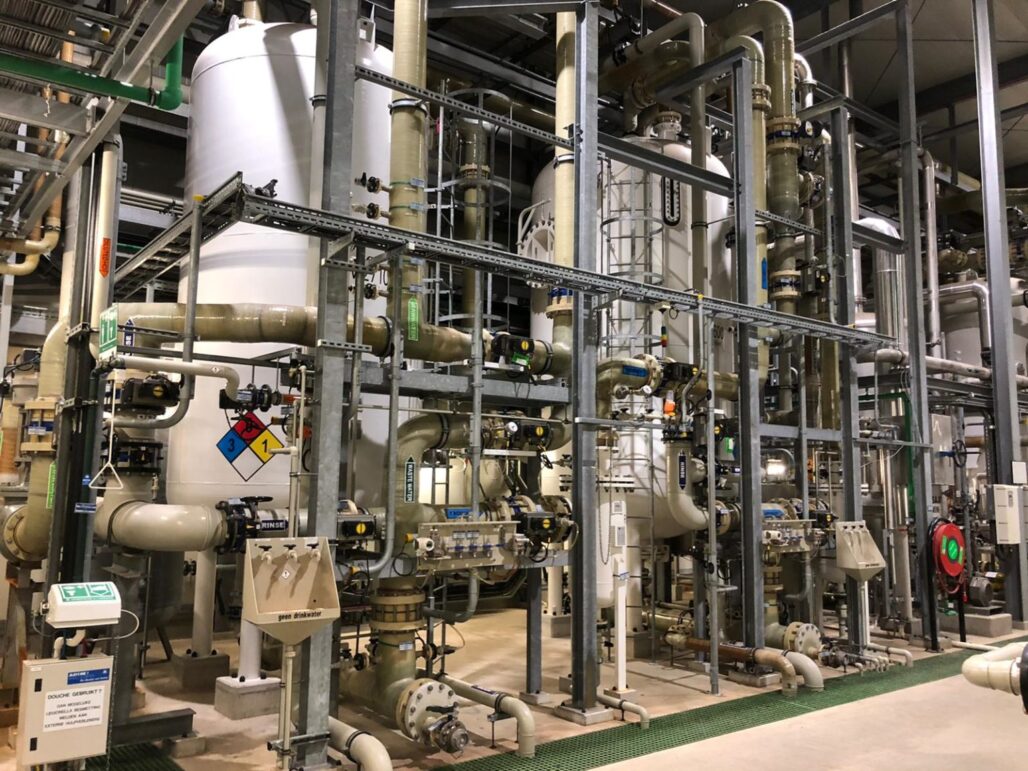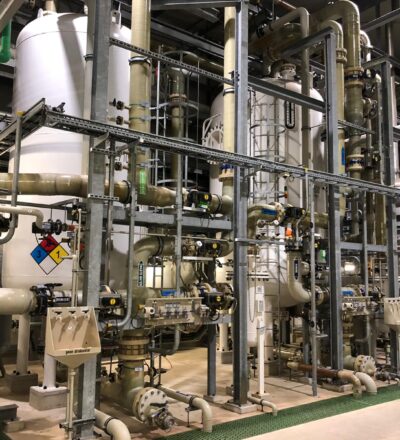The final report from the Steam and Condensate Quality project is now available. This report offers insights into how film-forming amine conditioning chemicals behave. It evaluates what their breakdown products are, how they are distributed in the steam/condensate system, and how they can help against corrosion.
The overall aim of the Steam and Condensate Quality project, was to come to a better understanding of the behaviour of film-forming amine conditioning chemicals (FFA’s) and their breakdown products in industrial steam/condensate systems. The project was made up of three work packages. In particular it was investigated how FFA’s are distributed in these systems. So that appropriate techniques can be used to treat them and to enhance how water can be used efficiently.
The project also looked at ways of keeping organic components out of steam and condensate. For example, those that have a negative impact on the steam/water system, in connection with the requirements for boiler feedwater (BFW).
Work packages
BFW was the focus of the first work package. This work package mapped out the distribution of conditioning chemicals as well as their breakdown products. A key focus was to characterize these products themselves. As well as how they are distributed in the steam/water system.
The second work package was the one that focused on treating steam condensate to enable maximum reuse. It not only looks at slightly polluted condensates, as they are called, but also at the more heavily polluted ones, the reuse of which is not a given at this point.
The third package considered the impact of Total Organic Carbon (TOC) components (both in conditioning chemicals and in their breakdown products) on the protection against corrosion in steam/condensate systems. This package comprised three main activities:
- A literature study on the corrosiveness of the TOC components that were analysed and their breakdown products
- An analysis of ‘first condensate’. Measuring the phase distribution of these components under well-defined conditions (temperature and pressure), made it possible to determine the risks of what is known as “first-condensate corrosion.” The results then served as input for actual corrosion tests.
- The corrosion tests themselves, which investigated the corrosive properties of organic breakdown products

A few hurdles
While carrying out these work packages, the team ran into a few technical and organizational hurdles. For instance, in view of the COVID-19 health crisis, all communication had to take place online. The report notes that “face-to-face progress meetings [that would have been] held in rotation at the participating partners’ locations, were sorely missed. The report also noted the high level of complexity involved in setting up experiments “under well-defined, reasonably extreme conditions (of pressure and temperature) in combination with limited scale (mini-boiler, first condensate),” and notes that the stability of these experimental set-ups needs improvement. This was done so that results can be validated more accurately.
Prospects for use in industry
Notwithstanding these few hurdles, the report briefly considers potential applications in industry of the techniques. These are explored from a number of perspectives. They are based on an evaluation of the findings from each work package. For instance:
- The Steam and Condensate Quality-project found that, although the use of film-forming amines leads to the formation of a lot of breakdown products, these are not organic acids and thus do not cause corrosion.
- It argues that reticence within industry regarding the use of fim-forming compounds as part of conditioning regimes in water/steam systems is not always justified, and that a thorough protocol, such as the one the project developed, can help overcome that reticence.
- The report recommends that, when it comes to reusing condensate from steam/water systems in which FFAs are used, the TOC specification of BFW should distinguish between “good” (FFAs) and “bad TOC” (minor organic acids, such as acetate), and considers the possibility that a limited treatment could be sufficient in some cases.
- The project team found that treating lightly polluted condensate streams with a combination of granular activated carbon, reversed osmosis, and mixed-bed ion exchange (MB-IEX) gives the best results, but that combining strong acid cation and MB-IEX gives the optimum results in terms of quality and costs.
- It was also found that membrane aerated bioreactor and membrane distillation are promising techniques for treating heavily contaminated condensate streams, even though they are capital-intensive and not fully developed yet.
So a lot to chew on here, and a lot of promise for the future.
View the Steam and Condensate Quality Seminar
In the closing seminar the project results were presented. We discussed in a panel with industry experts, moderated by Marjolein Vanoppen.
Possible spin-off
During the final seminar and afterwards, a number of suggestions were made for possible follow-up research. If you would like to join the discussion of project follow-ups, please contact Dewi Mooij to stay updated.
Acknowledgement
This project is co-funded with subsidy from the Topsector Energy by the Ministry of Economic Affairs and Climate Policy.
